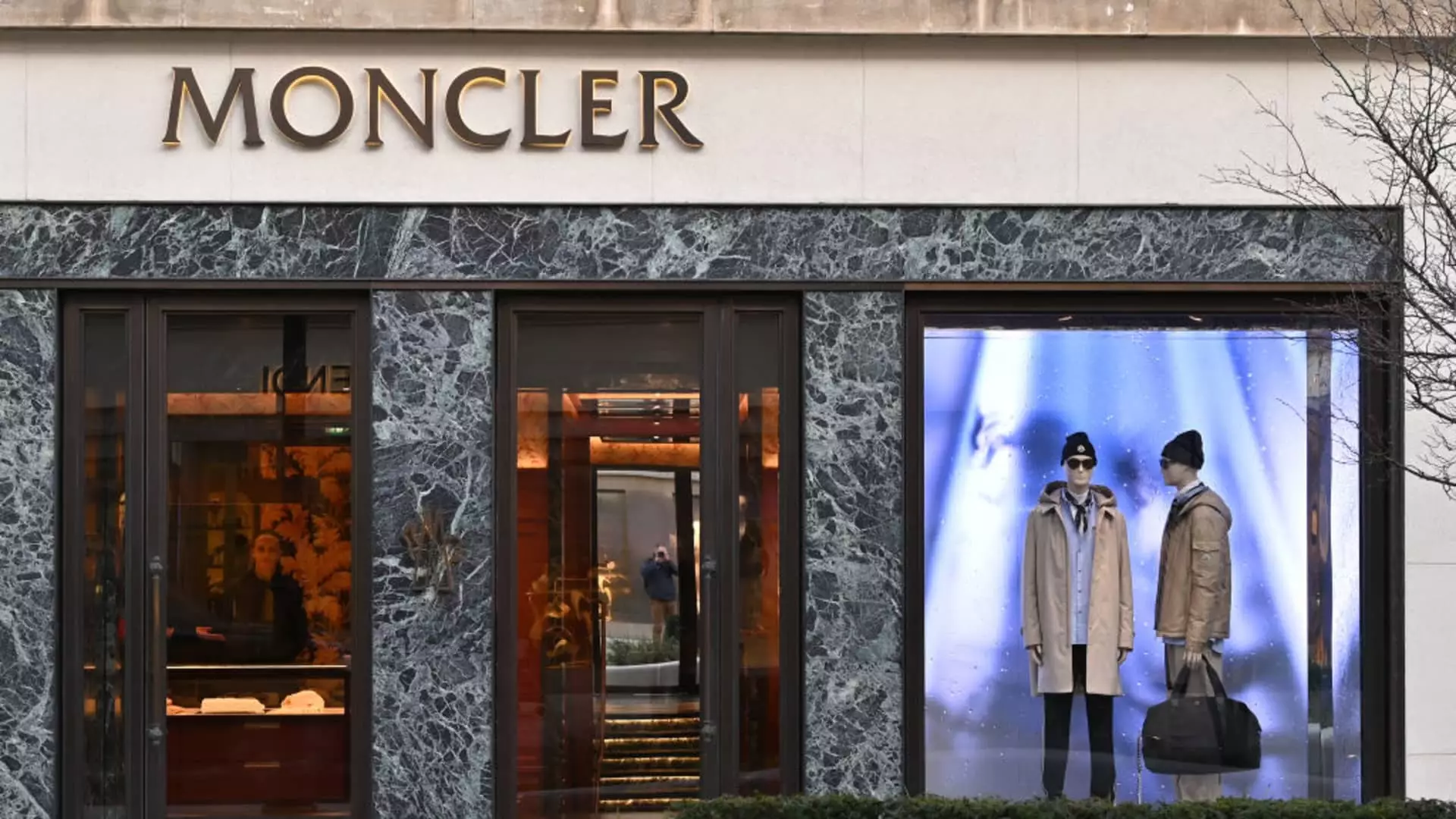In the high-stakes domain of luxury fashion, brands like Moncler find themselves in a precarious balancing act. While the allure of exclusivity often justifies premium pricing, the current strategy of incremental price hikes reveals an underlying vulnerability. The decision to rely on “very slight price increases” as a shield against tariff impacts may seem pragmatic, but it risks undermining the very foundation of luxury consumer loyalty. When brands continuously push price boundaries, they risk alienating the core clientele that values craftsmanship and exclusivity over mere status symbols.
More troubling is the company’s cautious outlook amid broader economic turbulence. Moncler’s hesitation to commit fully to expansion plans for 2026 exemplifies this uncertainty. Store openings, a vital growth engine for luxury houses seeking geographical diversification, now hang in the balance—postponements driven by macroeconomic instability and unpredictable currency fluctuations. This reactive approach suggests a recognition that the luxury market, in its current state, may no longer be a bastion of assured growth.
Pricing Strategies and Consumer Confidence
Moncler’s move toward conservative pricing increases underscores a critical truth: consumer sentiment is fragile. While the company’s attempt to “synchronize higher input costs with customer retention” sounds strategic, it reveals an underlying tension. Luxury consumers are not simply wallets awaiting new price tags; they are discerning patrons who associate price with value and cachet. Slight increases, especially in a climate marked by economic sluggishness, risk crossing a line that triggers discontent or even brand detachment.
Roberto Eggs’ comment about monitoring macro trends and currency movements signals a recognition that external factors will dictate the brand’s next moves. This dependency exposes an uncomfortable reality for luxury brands: their fortunes are increasingly intertwined with geopolitical and economic shocks beyond their control. A miscalculation could significantly damage long-term loyalty, especially if customers perceive that their exclusivity is eroding or that prices are being artificially inflated to compensate for poor planning.
The Fragility of Global Markets
Moncler’s recent sales figures tell a story of stagnation and vulnerability. The modest 1% decline, coupled with mixed performances across markets, illustrates how delicate the current recovery is. The U.S. market, often considered more resilient, shows a 5% uptick—though this is possibly a pre-emptive move driven by tariff anticipation rather than genuine demand. In Asia, the largest growth driver historically, flat sales highlight shifting consumer behaviors and the impact of currency rebalancing, particularly in Japan.
European markets, characterized by an 8% decline, reflect broader issues affecting tourist expenditure and economic confidence. The luxury sector’s dependence on affluent tourists makes it inherently fragile, vulnerable to geopolitical tensions, currency fluctuations, and pandemic-related setbacks that further diminish their spending power. In essence, no market is immune to external shocks, and continued reliance on geographic expansion may not be a sustainable growth strategy.
The Perils of Short-Term Fixes
Relying on marginal price hikes and tentative expansion plans in a climate of economic uncertainty is a risky gamble. Such strategies lack the foresight needed for enduring resilience. If the luxury market is to adapt effectively, brands must confront the reality that consumer confidence is waning faster than many anticipated. The dangerous cycle of incremental price increases paired with postponed investments risks devaluing the perceived prestige of brands like Moncler.
Furthermore, the current approach may inadvertently reinforce a narrative of inconsistency. Luxury consumers expect transparency, stability, and a sense of long-term vision. Echoing the company’s own words, plans for future store openings are kept flexible, reflecting an acknowledgment that the environment may not favor aggressive expansion. This ambivalence could inadvertently signal to customers and investors that the brand is not fully confident in its trajectory—causing ripple effects across stakeholder perceptions.
In an era where economic signals are increasingly unpredictable, luxury brands must reevaluate their reliance on incremental pricing and cautious expansion. These strategies, while seemingly prudent, risk superficial fixes that ignore deeper issues—namely, declining consumer confidence and market fragility. A more resilient approach would involve authentic engagement with customers, innovative offerings that justify price increases beyond mere markups, and a clear, confident vision for sustainable growth. Anything less risks diminishing the very exclusivity that makes luxury brands desirable in the first place, leaving them vulnerable in an ever-changing global landscape.

